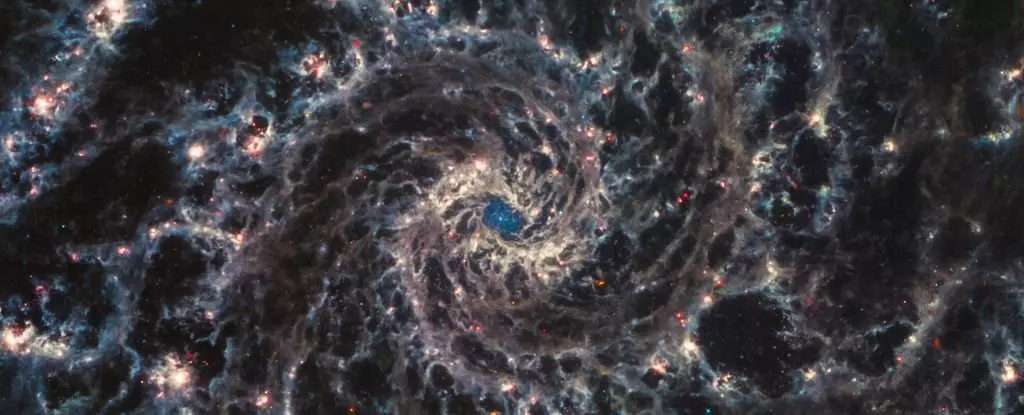The launch of the James Webb Space Telescope (JWST) marked a significant milestone in astronomy, offering a new lens through which to explore the vast and intricate universe. Since its inception over three decades ago, JWST was a culmination of ambition and scientific inquiry, designed to be the most advanced space telescope ever built. As we commemorate three years of its successful operation, it becomes increasingly evident that this remarkable tool has not only advanced our understanding of space but has also posed new questions about the universe’s earliest epochs. This article delves into the groundbreaking revelations and perplexing mysteries uncovered by JWST, reshaping our comprehension of cosmic history.
JWST’s capabilities extend far beyond our planet’s atmosphere, allowing it to capture stunning details of celestial phenomena in infrared light. By observing the universe in this way, JWST has pushed the frontiers of our observational reach. Recently confirmed findings indicate that JWST discovered galaxies dating back to a time when the universe was merely 300 million years old. This staggering achievement reveals that even in such a nascent universe, these galaxies managed to amass a mass equivalent to 400 million suns, challenging our preexisting theories regarding star formation rates shortly after the Big Bang. This observation implies that early star formation processes were surprisingly prolific, raising questions about the mechanisms driving such efficiency.
The Curious Case of Color and Composition
Among the puzzle pieces revealed by JWST are the colorful yet enigmatic characteristics of the earliest galaxies. Traditionally, dust plays a significant role in altering the light emitted by stars, leading to a reddish hue. However, JWST’s findings show that many early galaxies are inexplicably bright and blue, displaying little to no dust in their composition. This contradiction begs for explanations: Could these galaxies possess massive stars that imploded without generating the typical supernova outbursts? Or maybe they underwent violent explosions that expelled the dust, revealing a dazzling blue core? The absence of expected dust challenges conventions, prompting calls for reevaluation of our understandings of star evolution and the material at play in the early universe.
An intriguing aspect of JWST’s observations pertains to the chemical make-up of primordial galaxies. The probe has revealed unexpectedly high levels of nitrogen—far exceeding that of our Sun—while other metal elements remain less abundant. Such discrepancies indicate that the processes responsible for the chemical enrichment of the universe’s earliest stars were potentially complex and varied from established models. Consequently, the existing frameworks of chemical evolution need substantial refinement to incorporate these newfound intricacies materializing from JWST observations.
The ability to visualize dim distant galaxies has opened a corridor to understanding galaxy formation dynamics. Utilizing massive clusters of galaxies as natural ‘lenses,’ JWST enhances faint signals from early galaxies, and in doing so, the telescope has detected a plethora of far-off galaxies exceeding prior expectations. Importantly, this begs further exploration into when star formation ceases in these galaxies, a threshold that remains elusive. The insights gained from these faint relics may transform our understanding of cosmic evolution and the factors contributing to the end of the “dark ages” of the universe, just after the Big Bang.
The Red Dots enigma
One of the most enigmatic discoveries made by JWST is the prevalence of compact, red objects, dubbed the “little red dots.” Initially misconstrued as super-dense galaxies, intensive studies have unveiled perplexing characteristics, including massive gas emissions typically associated with supermassive black holes. Surprisingly, these objects exhibit no expected X-ray emissions, leading to their classification as anomalies that blur the line between galaxies and stars. This ambiguity provides fertile ground for new hypotheses about the relationship between black holes and star formation during the formative years of the universe.
Revisiting Galaxy Formation Models
As much as JWST has enhanced our perception of cosmic history, it has simultaneously exposed certain limitations in current galaxy formation models. The telescope has identified some massive galaxies emerging far sooner than our models predict, prompting deep discussions in academia about the efficiency of initial star formation and the nature of dark matter. Addressing these discrepancies not only urges astronomers to reassess existing narratives but possibly reshapes our entire understanding of galactic evolution.
The Path Ahead
As JWST continues its mission, it holds the promise of unveiling further cosmic secrets. The mysteries resting in the shadows of the universe beckon, and with each new finding, our comprehension of the cosmos evolves. While the telescope has illuminated areas of knowledge, the questions it raises enrich our fascination with the universe. In the not-so-distant future, as further images and data come to light, we can anticipate a deeper understanding of our place in the cosmos and the very fabric of existence.
The journey of the James Webb Space Telescope is not simply one of discovery but also one of challenging assumptions and igniting curiosity. As we continue to learn from its observations, we remain at the threshold of unprecedented revelations, promising a future rich with scientific discovery.


Leave a Reply